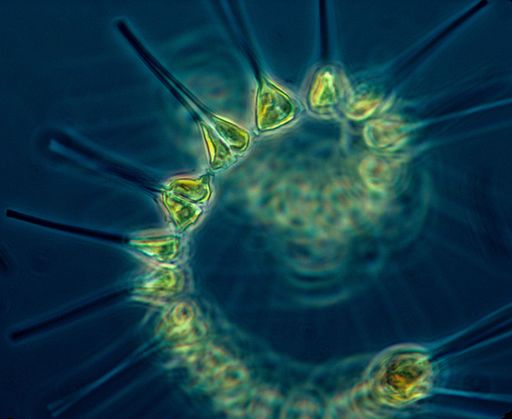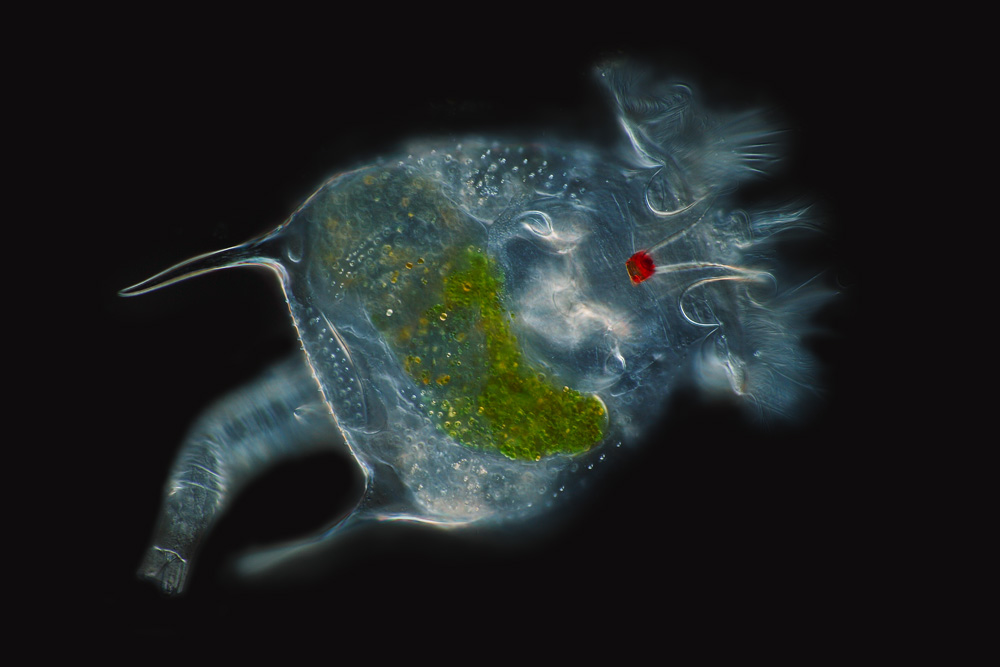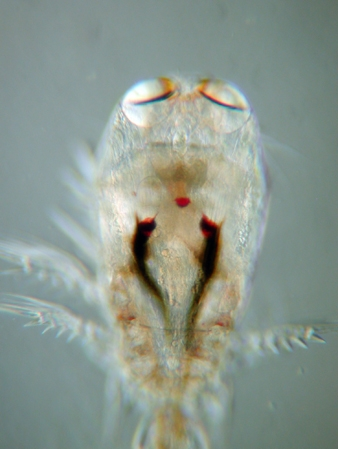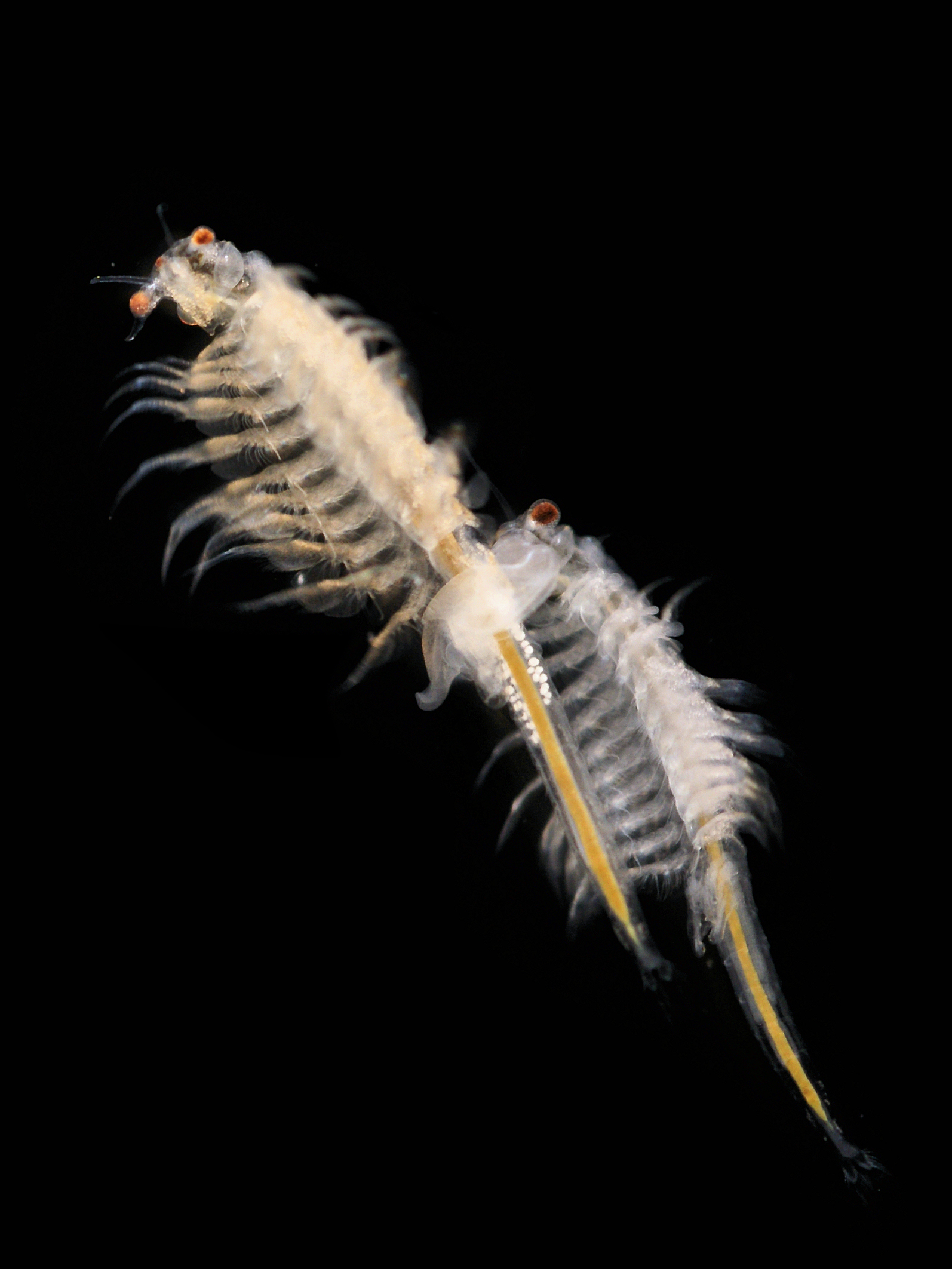5 Nutrient packed live foods for the reef aquarium
For convenience and cost reasons, many of us depend on prepared foods to feed our reef tanks. Pellets, flakes and freeze-dried products are piled up underneath my aquarium stand.
My favorite flake product is the Spirulina flake make by Zoomed. I also like the Marine S pellets from Hikari, because the particle size seems perfect for all of the fish in my aquarium. My fish absolutely destroy frozen mysid shrimp and brine shrimp products, but nothing gets my fish and corals going quite like live foods. Here are a few of my favorite live foods, and how I use them.
- Phytoplankton
- Rotifers
- Copepods
- Brine shrimp
- Black Worms
Phytoplankton
Phytoplankton drift along in the sea, absorb the sun’s energy, breathe in the greenhouse gas carbon dioxide and convert it into sugar. Phytoplankton are primary producers, meaning they make their own food and are at the very base of the food chain, serving as food for the tiniest ocean predators.

It seems only natural that supplementing our reef tanks with this natural food source should boost the natural biodiversity in our own tanks, in the same way, that adding organic carbon increases the beneficial bacteria in our tanks.
In the past, I have written about culturing your own phytoplankton and dosing phytoplankton.
Rotifers
Rotifers are microscopic (or nearly microscopic) multi-cellular zooplankton that feed on phytoplankton and are the next step up in the food chain. Rotifers have very little nutritional value, on their own, but if the rotifers were feeding on nutritious food, like phytoplankton, the undigested phytoplankton in their gut actually provides nutritional value to the animals in your tank that eats them. I have raised larval clownfish and neon gobies on rotifers, gut fed with nannochloropsis phytoplankton. It is highly unlikely that you have larval fish swimming around in your reef, but target feeding rotifers to anything with polyps or mouths of an appropriate size is likely to help boost growth.

Copepods

- Size of the copepods
- The temperature of the water they are used to
- Type of food they eat
- Whether they prefer to float in the water column or crawl on the substrate
Tiger copepods
Made ubiquitous by Reef Nutrition, you may see bottles of these pods on the counter at your favorite local fish store. These pods are larger than your garden-variety reef aquarium pods, but fish and corals love them. Add them to your refugium, sump, or even directly feed them to your corals and fish for a healthy, nutritious food.
Tisbe copepods
Tisbe copepods are another great food option for picky fish or to target feed to corals with large prey-capturing polyps. Some aquarists report better results having these pods ‘take’ to aquarium conditions a little better than the tiger pods. These copepods are detritivores, which means they eat the gunk, muck and leftover food in your tank, helping to keep your tank clean. If they grow and reproduce in your tank, you will be creating a natural and hopefully sustained food source for your fish.
Calanus copepods
These pods, scientific name Parvocalanus crassirostris, are often used by fish breeders because the nauplii (babies) of these copepods are the perfect size for larval fish to eat. Just a few years ago, it seemed like these copepods were only available at academic marine laboratories and commercial breeders–but now you can buy them online.
Brine shrimp
Brine shrimp, also known as artemia, if you want to impress your friends, are a small invertebrate that grows in saltwater.

You can often buy a bag of live brine shrimp from your local fish store, or you can hatch and growth them on your own from brine shrimp cysts. Feed the tiny, newly hatched brine shrimp nauplii directly to the corals and shrimp in your tank, or try your hand at growing them out in a separate tank to grow them to adult-size and feed your reef. Since brine shrimp naturally live in brackish or saltwater environments, they will actually survive in your aquarium long enough to be discovered…and devoured. It’s fun to watch how enthusiastically your fish will chase down and eat these tiny brine shrimp morsels.
Black Worms
Black worms are a freshwater invertebrate but are a high-calorie food that your fish will love. They can grow pretty large, by saltwater aquarium food standards, but your fish will greedily eat them up. Not every fish store carries them, but if a fish store in your area does, pick up a container and treat your fish. They’ll love it. Black Worms are too large to eat (and are also a bit messy) for SPS corals, but you could probably spot feed them to your LPS–that is–as long as the fish in your tank doesn’t see it–or they’ll steal it.
If you’re interested in culturing your own black worms, I found a helpful video:
Where to buy
Depending on where you live, phytoplankton, rotifers, and copepods may be most easily purchased online. Some local fish stores carry these products, but due to the relatively high cost and short shelf life, they can be challenging. These three products are often used to support the aquaculture of fish (including seahorses) and can sometimes be purchased from these businesses. For example, the last batch I received came from a seahorse breeder in Florida called AP Aquaculture. One of the more common commercial brands is Reed Mariculture.
You can get brine shrimp eggs at most local fish stores, or buy online from Amazon. You can get just the eggs or invest in a kit.
Blackworms are a bit more hit-or-miss. I’m fortunate to have a local fish store that carries them. A company named AquaticFoods has an interesting promotion. On their website, they have a certificate for a free supply of black worms that you can take to your local fish store. If the fish store order worms from the supplier, they’ll reimburse for the free supply. That’s a pretty cool way to generate some word-of-mouth demand for their product.



Leave a Reply